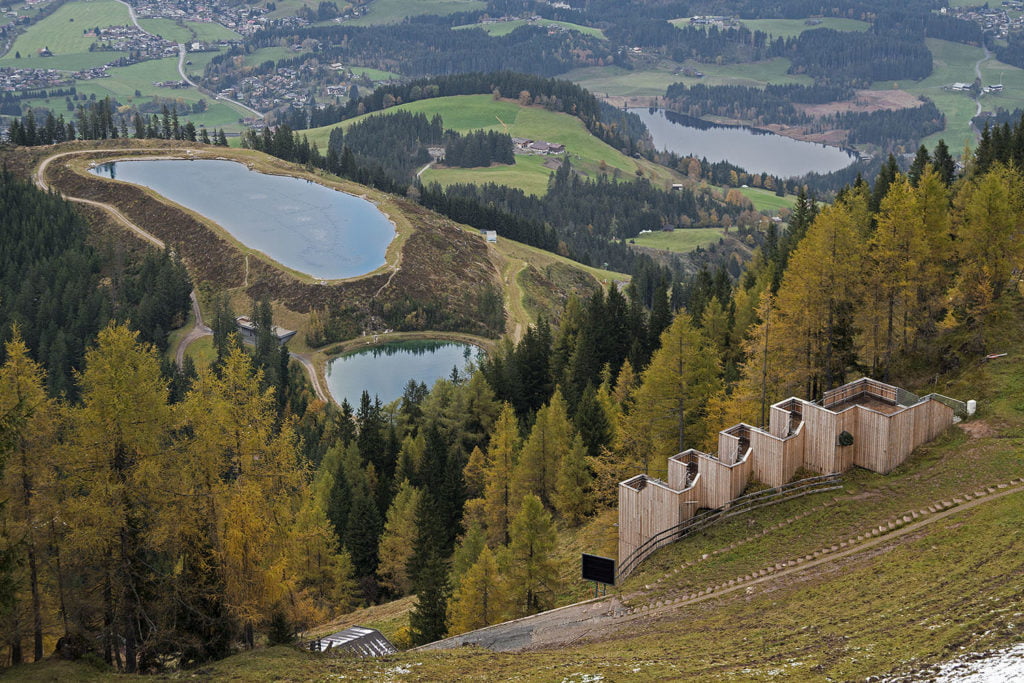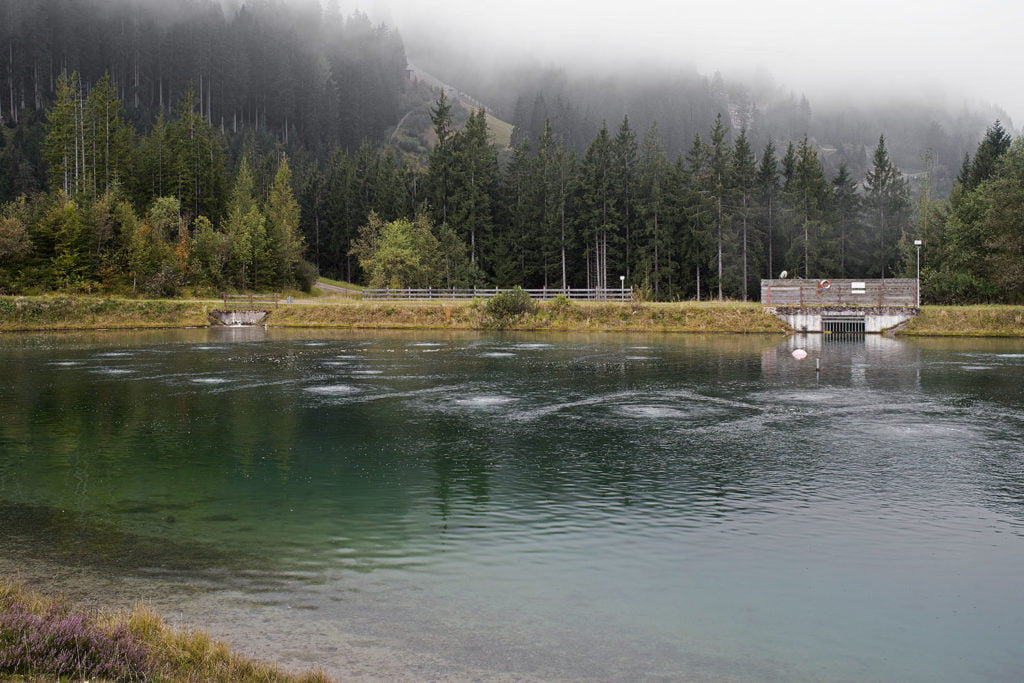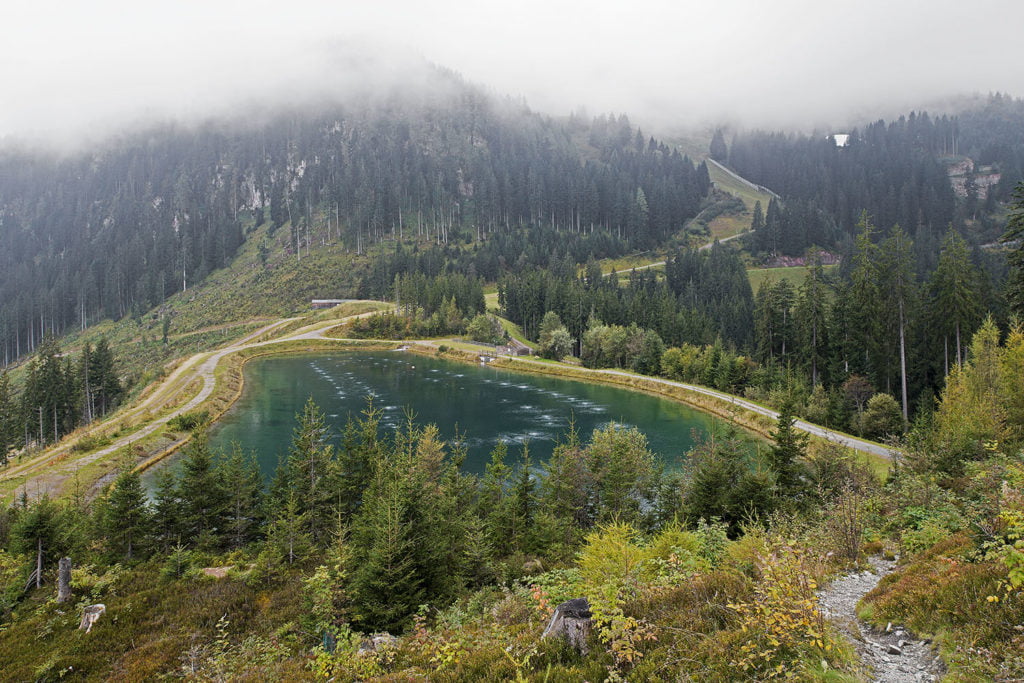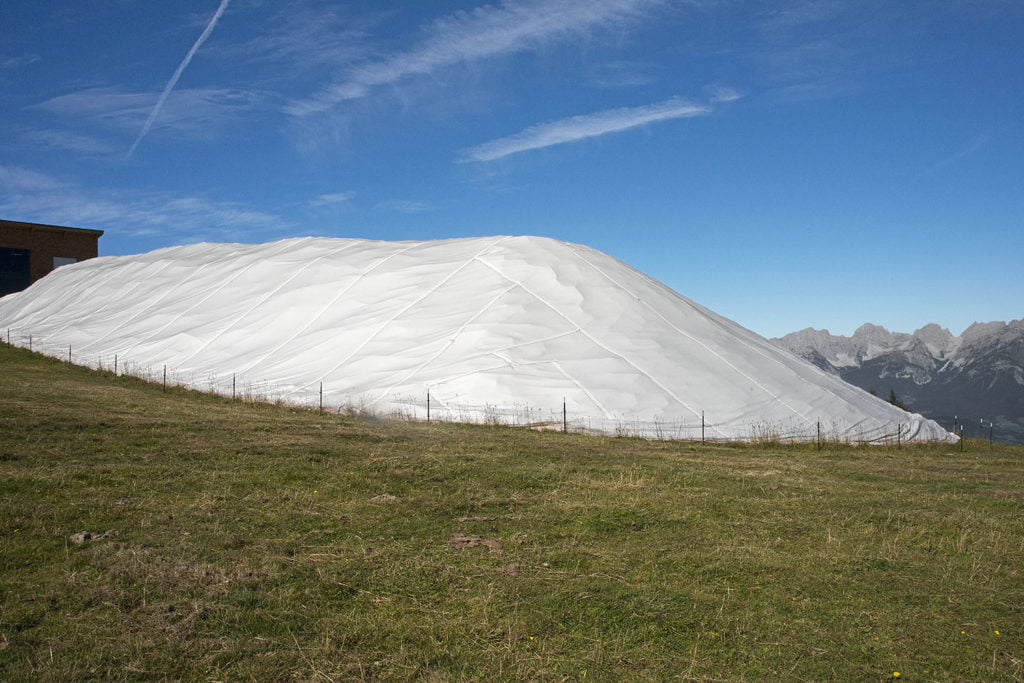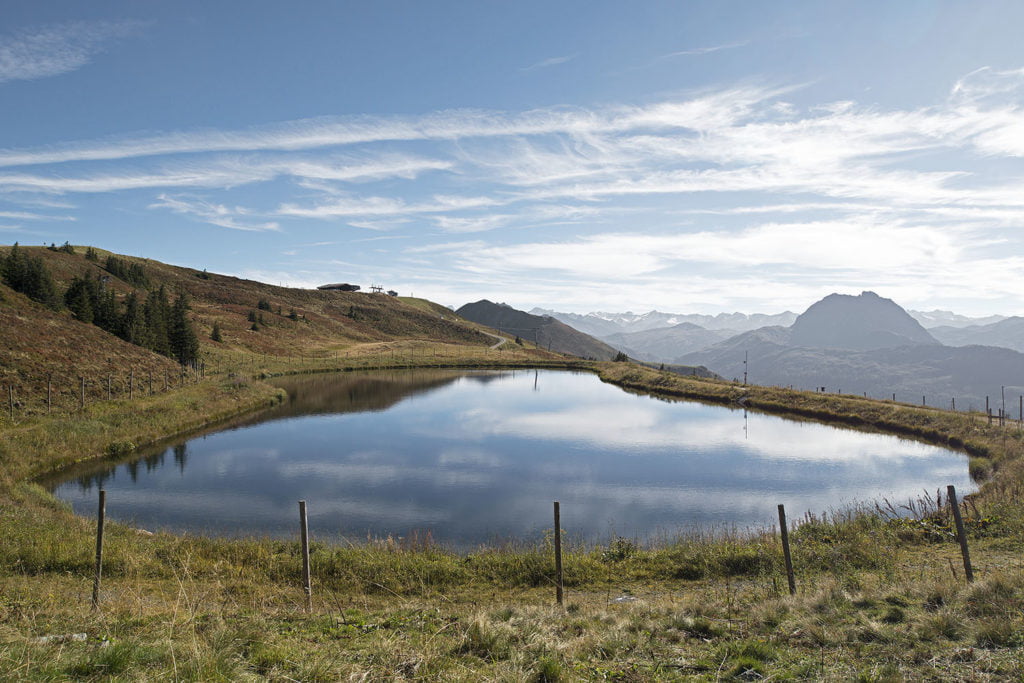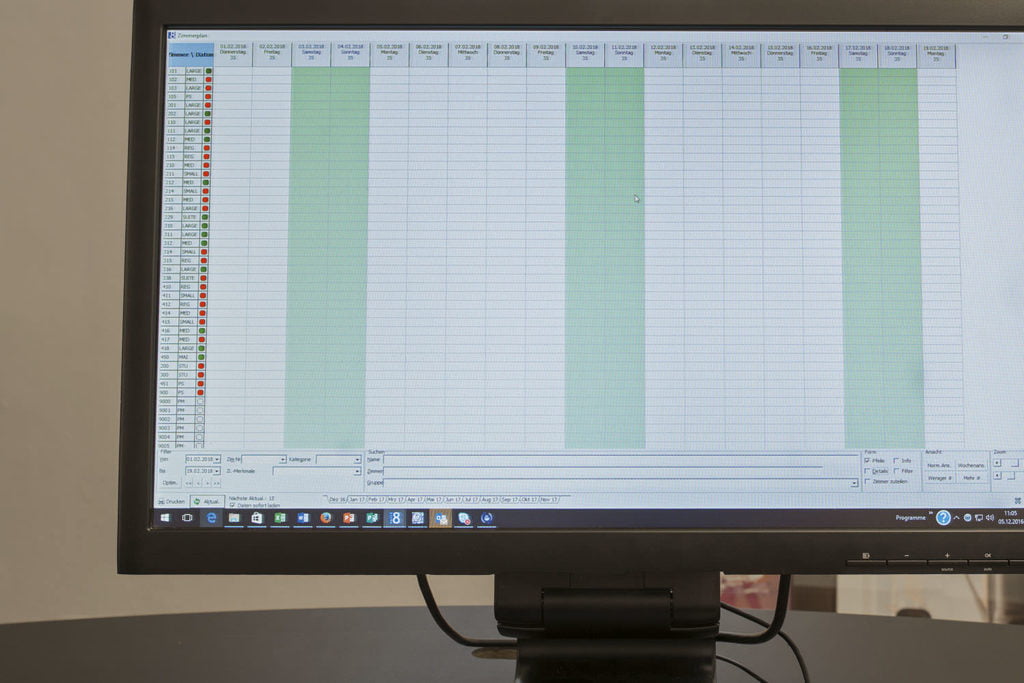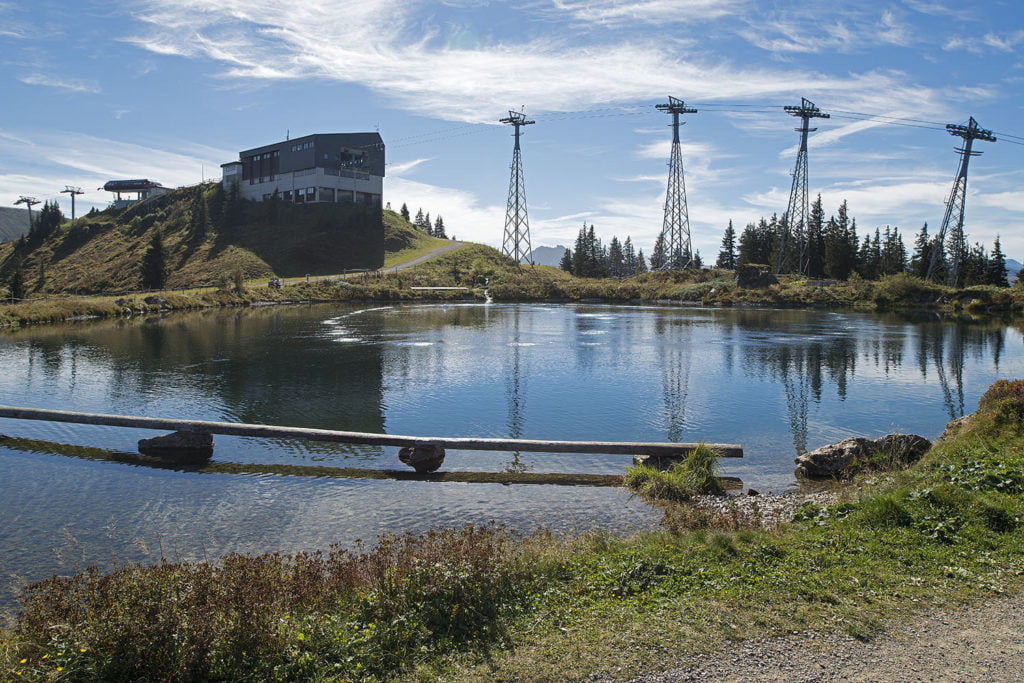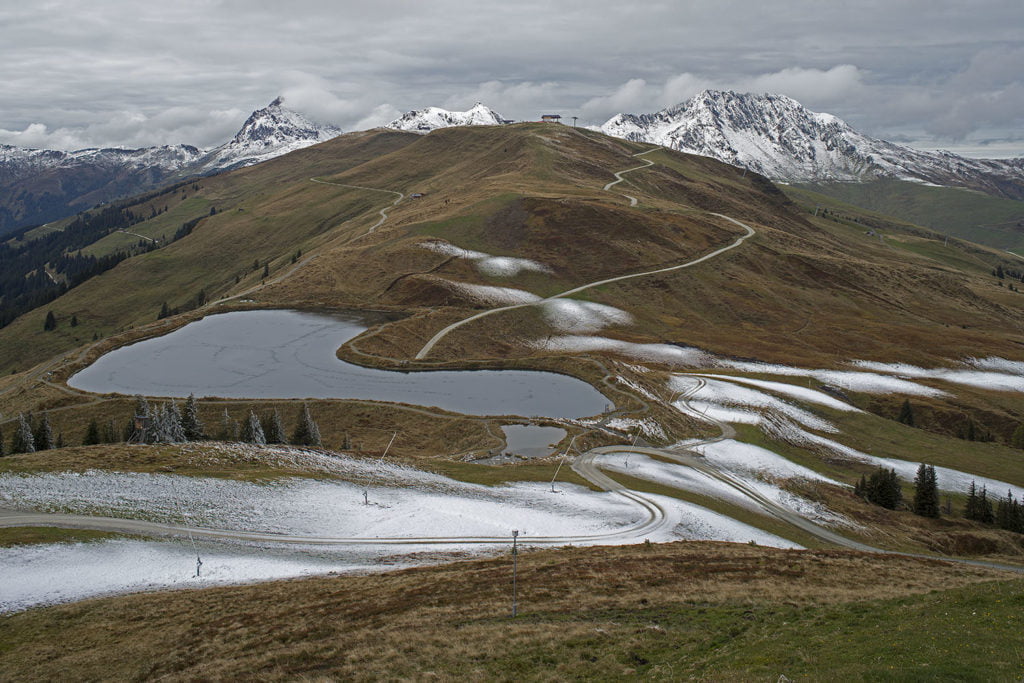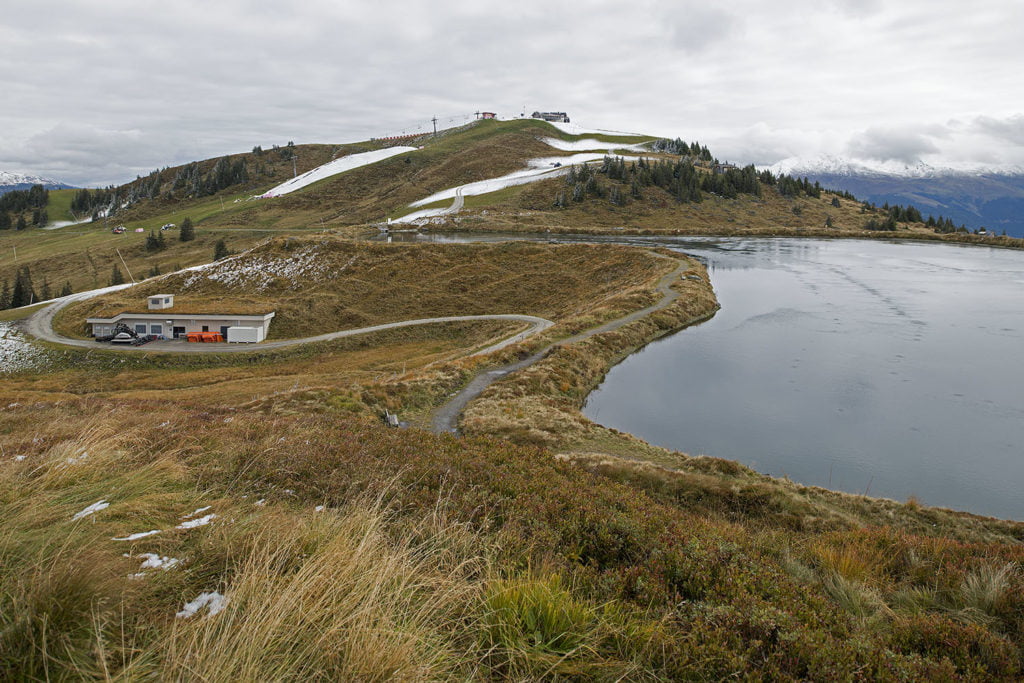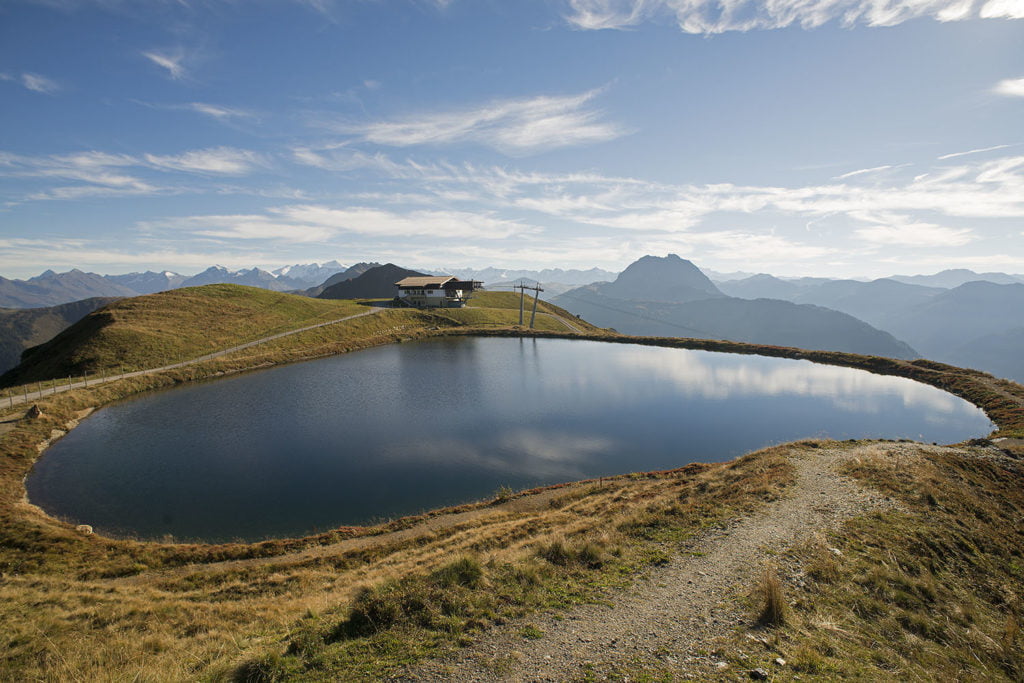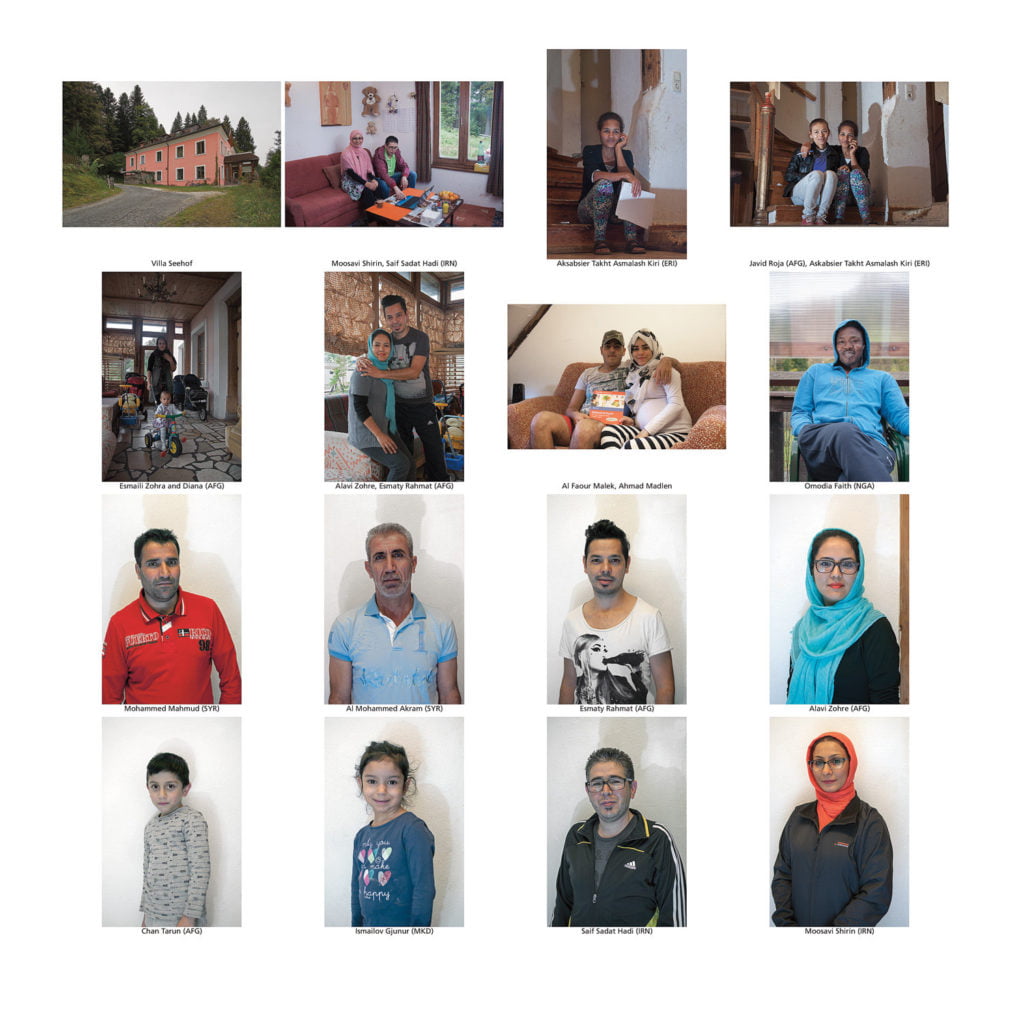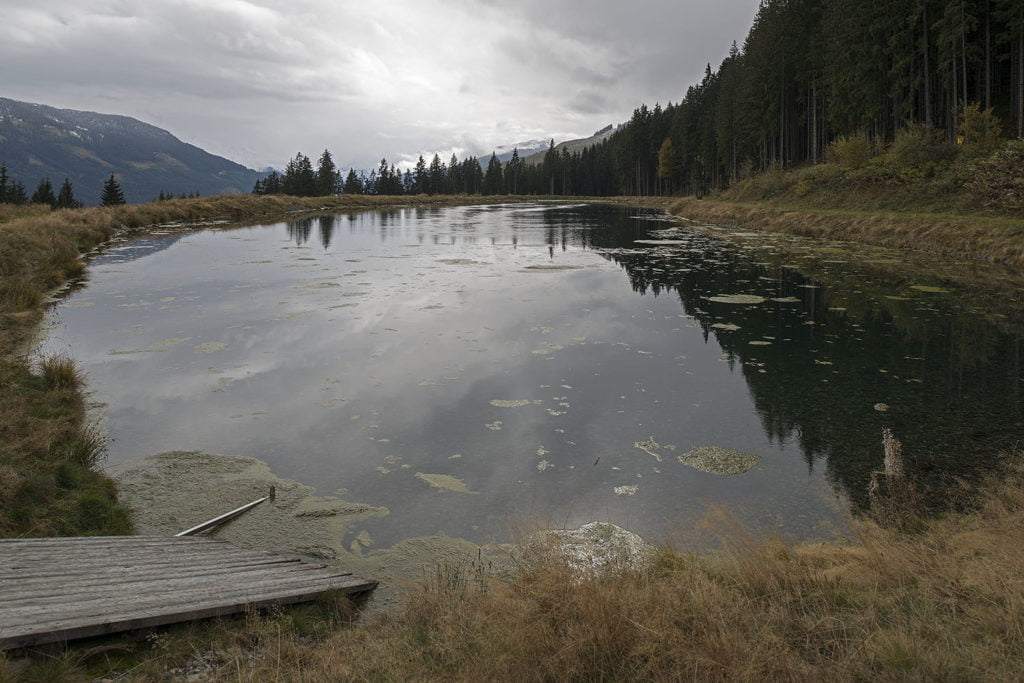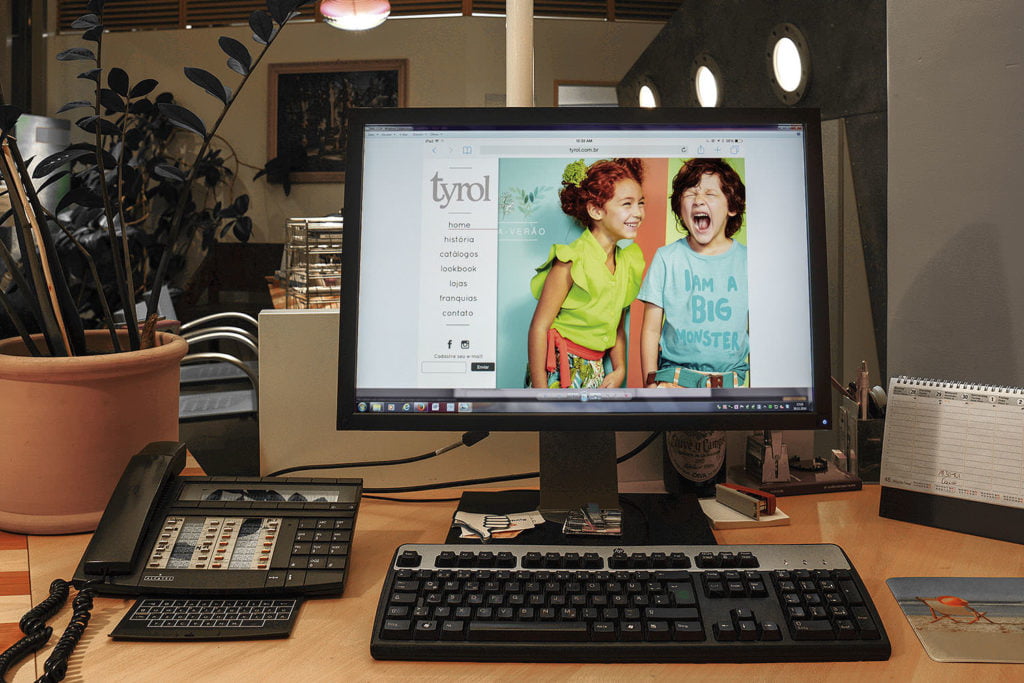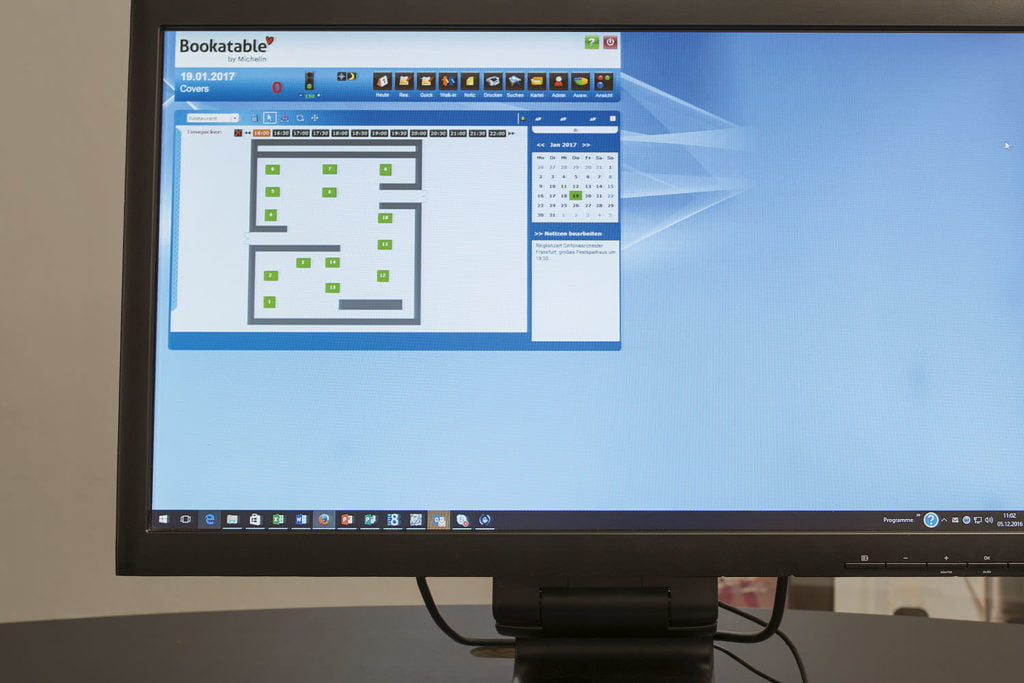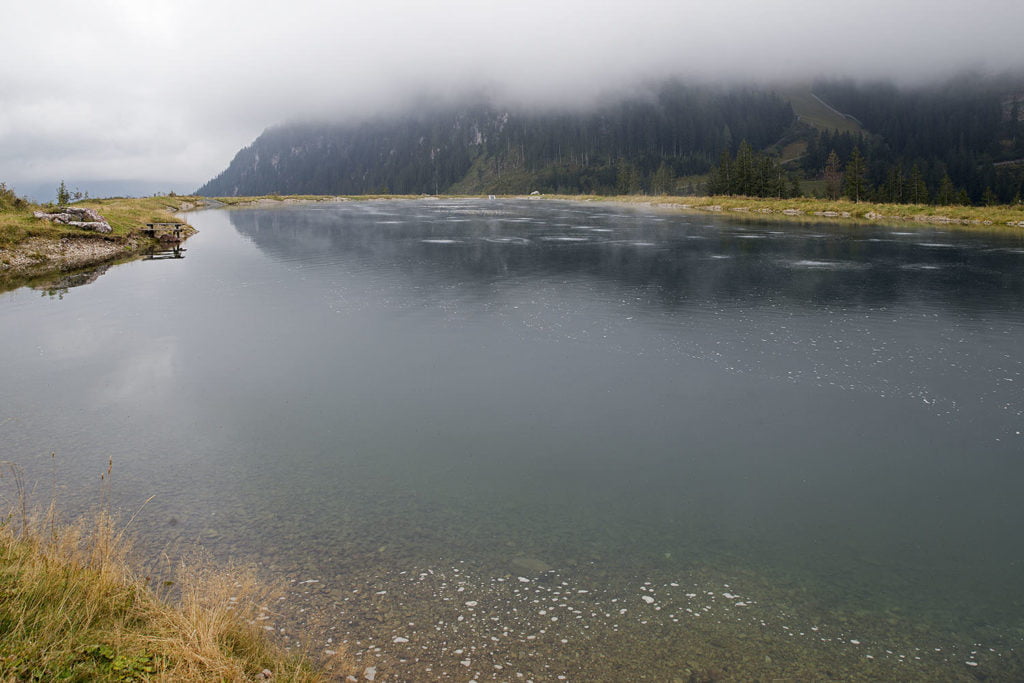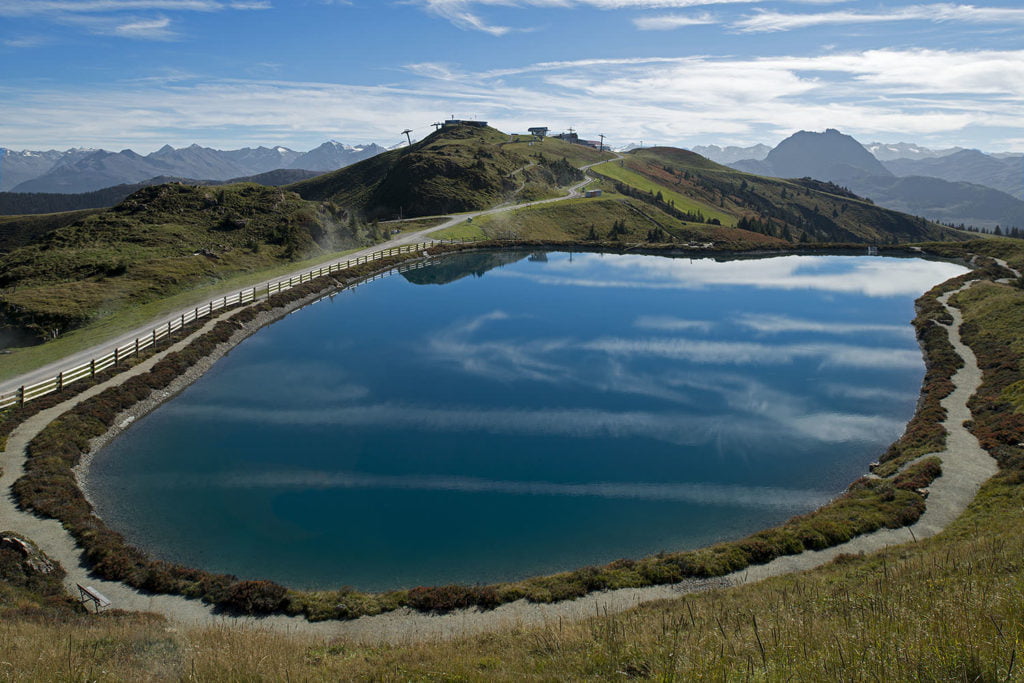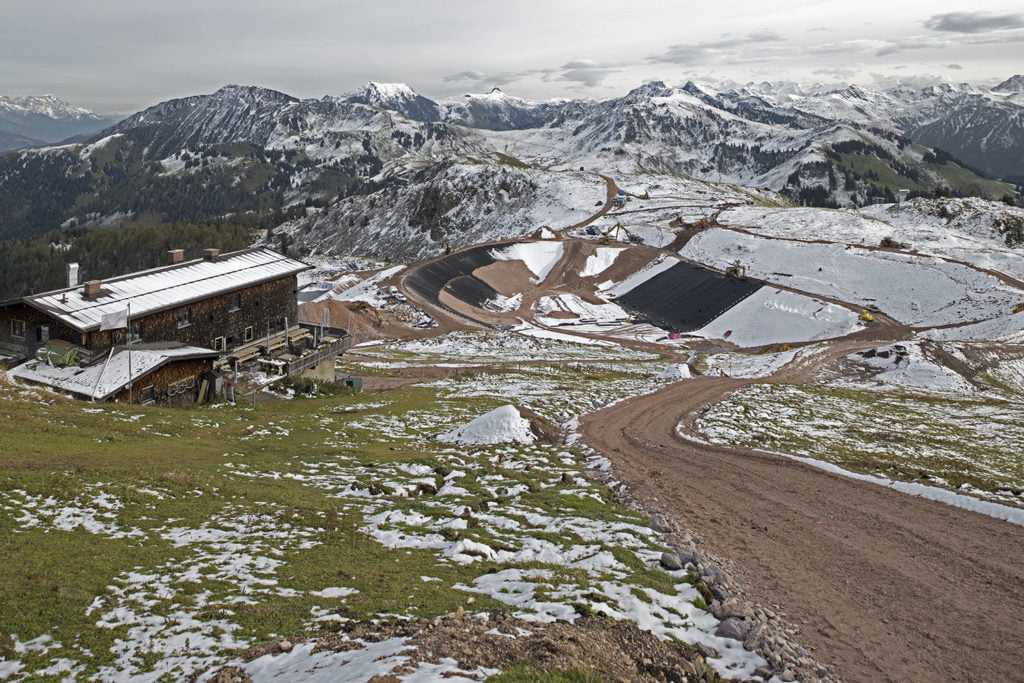Werner Kaligofsky
47°26’47.70“N 12°23’27.28“E
Who does the land belong to?[ref]See aut. architektur und tirol (publishers): Vermessungen. Tirol auf der statistischen Couch, Innsbruck 2014, p. 7. [/ref]A couple of years ago, on one of my trips to Tyrol, I noticed that an entire hill was missing on the other side of the valley, opposite my parents’ house; it had somehow disappeared, complete with flora and double-chairlift. As if a bomb had exploded there, leaving a giant crater on the horizon – viewed from below. ‘They building a lake up there, to provide artificial snow for the ski slopes,’ was the answer I got from the locals in reply to my look of total disbelief.
Werner Kaligofsky
Thanks to
Raad al Abbas, Friedrich Achleitner, Bernd Brandstätter, Sabine Breitwieser, Lucius Burckhardt, Leonard Cohen, Manuela Cortiel, Karim El-Gawhary, Silvia Eiblmayr, Linda Erker, Karin Erlmoser, Klaus Förster, Andreas Gfrerer, Roman Höllbacher, Rainer Iglar, Wolfgang Kos, Johannes Kostenzer, Michael Mauracher, Peter Meisnitzer, Roland Psenner, Arno Ritter, Alwin Schönberger, Sarah Schwaiger, Ravi Shankar, Andreas Siekmann, Vivian Seidl, Georg Überall, Edwin Veldt, Ayre Wachsmuth, Michael Zinganel and to all the refugees who took part in the portrait photographs at the Villa Seehof.
Werner Kaligofsky, born 1957 in Wörgl, Tyrol, studied at Höhere Graphische Bundes- Lehr- und Versuchsanstalt in Vienna and at Akademie der bildenden Künste in Vienna. He lives and works in Vienna and Salzburg.
www.wernerkaligofsky.net
Werner Kaligofsky takes a systemic look at his home town of Kitzbühel by exploring a series of interwoven phenomena. Kitzbühel, whose GPS co-ordinates provide the title of his work, stands as a paradigm for the global tourism industry and the marketing of the Tyrolean Alps and their lucrative seasonal skiing scene, with all the visitor numbers and overnight stays that entails. As a winter sports resort heavily reliant on snow, the town and its surroundings are locked in a merciless battle with global warming within the logic of the local economy, with the mountain landscape providing the setting in which that battle is waged. In Alfons Walde’s popular winter paintings from the 1930s these mountains are blanketed in thick snow glistening in the sunshine. And yet, in recent years, ten reservoirs and lakes have been built in those very mountains to help produce artificial snow, with serious repercussions, both visible and beneath the ground, on the landscape and the ecosystem. Kaligofsky captured these lakes (one of which is still a building site) with his precise objective lens and then used Photoshop to edit out all local references such as geographical details, tourism logos and logotypes. Here again, he added their corresponding GPS co-ordinates by way of picture titles instead of the names of the lakes, along with data on the capacity of each reservoirs. Another photo depicts ‘snow-farming’, a heap-like mound used for conserving old snow under dazzlingly white sheets of plastic tarpaulin. Not a single living creature is visible in any of the photographs taken in the autumn, enhancing the technological nature of these fabricated topographies, despite some rather contrived looking nature restoration measures.
Kaligofsky has also interspersed additional motifs into his reservoir series. From one of the TV screens in a Salzburg tourist office he photographed two children posing for children’s fashions, an online ad posted by a Brazilian company that markets its products under the label Tyrol; and, by way of an abstract counter-figure as it were, he also used the photograph of a TV screen in a Salzburg hotel that featured the grid-covered user interface of a software program that displays room lettings and restaurant table reservations. As a fourth theme – not least as a reference to the globalised codes of everyday apparel and camera poses – Kaligofsky added a series of portraits he initiated and then had photographed under his instructions by a young Iraqi refugee called Raad al Abbas, depicting the residents and staff at accommodation quarters set up for refugees in a former hotel on the lake of Schwarzsee near Kitzbühel: in each case the names of those portrayed and the country codes of their countries of origin provided the titles for the portraits.
Kaligofsky rightly links his views of the transformed mountain landscape around Kitzbühel with satellite- and internet-based information and communication technologies; after all, to a certain extent, they represent the operating systems of ‘globalisation’ – which includes global refugee movements. His photographs of this bruised and battered Tyrolean landscape[ref]For instance, the building of the Seidlalm II reservoir alone required the clearing of almost three hectares of land. See excerpt from the water information system of the Federal Province of Tyrol, online: https://portal.tirol.gv.at/wisSrvPublic/wis/wbo_wb_auszug.aspx?TYPE=T&ANL_ID=T20561973R3. [/ref] are also striking counter-images of the way in which these reservoirs are depicted in tourism advertising, anecdotally embellished with cows and sheep and marketed as ‘idyllic mountain lakes’.[ref]For example on the website of Kitzbüheler Alpen Marketing GmbH, see www.kitzbueheler-alpen.com/de/kirchberg/sommer/bergseen.html.[/ref] In some of Kaligofsky’s photographs these lakes look like the naked unblinking eye of a Cyclops. But unlike the mythical giant, he is no longer the violent representative of nature’s menacing forces, merely another casualty left by the wayside.[ref]The Cyclops in Odilon Redon’s eponymous painting dated c.1914 is depicted desirously gazing at a sleeping naiad. Against this backdrop he seems like an allegory of what lies ahead / or still lay ahead at the time for this mountain landscape. See http://krollermuller.nl/en/odilon-redon-the-cyclops-1.[/ref]
Silvia Eiblmayr is an art historian and curator; lives and works in Vienna.
